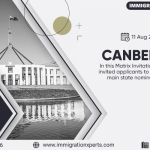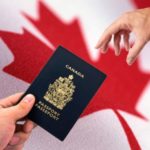Australia : Visitor visas will be simplified Immigration and Citizenship
The Minister for Immigration and Citizenship has announced in a media release the Australian visitor visa regime will change dramatically from 23 March 2013. The most significant change is that work activities are no longer permitted on any business visitor visa, and the new Temporary Work (Short Stay Activity) Visa (Subclass 400) is now the required visa for highly skilled work assignments of up to six weeks in duration. The number of visitor visas will be reduced from nine to four.
From 23 March 2013, the Department of Immigration and Citizenship will no longer be accepting new applications for the following visa categories:
1. Tourist Visa (subclass 676)
2. Sponsored Family Visitor Visa (subclass 679)
3. Business (Short Stay) Visa (subclass 456)
4. Sponsored Business Visitor (Short Stay) Visa (subclass 459)
5. Medical Treatment (Short Stay) Visa (subclass 675)
6. Medical Treatment (Long Stay) Visa (subclass 685)
7. Electronic Travel Authority (Visitor) (subclass 976)
8. Electronic Travel Authority (Business – Short Validity) (subclass 977)
9. Electronic Travel Authority (Business – Long Validity) (subclass 956).
From 23 March 2013, visa applicants will be required to apply for:
• Temporary Work (Short Stay Activity) Visa (subclass 400)
• Visitor Visa (subclass 600)
• Electronic Travel Authority (ETA) (subclass 601)
• Medical Treatment Visa (subclass 602)
• eVisitor Visa (subclass 651).
Visa subclasses 600, 601 and 651 will permit tourism activities and business-visitor activities. Business-visitor activities may include attending a conference, negotiation or an exploratory business visit. No work activities will be permitted as a business activity.
All visa applications for the Electronic Travel Authority (ETA) must be lodged online. Only nationals from certain countries are eligible to apply. A list of eligible foreign nationals is available athttp://www.immi.gov.au/visas/visitor/601/applicants.htm. The applicant must be outside of Australia at the time of application and decision.
The eVisitor will be available by online application for nationals from certain countries. A list of eligible foreign nationals is available athttp://www.immi.gov.au/visas/visitor/651/applicants.htm. The applicant must be outside of Australia at the time of application and decision.
The Visitor Visa will be available for all nationals. The Visitor Visa, depending on unique circumstances, may be applied for in paper format or online. Further details are available at http://www.immi.gov.au/visas/visitor/600. Depending on individual circumstances, an applicant may be inside or outside of Australia at the time of application and decision.
The Medical Treatment Visa is available for patients who must travel to Australia for medical procedures or consultations. The Medical Treatment Visa must be applied for in paper format at either the Department of Immigration and Citizenship (if in Australia) or at the appropriate Australian Embassy/Consulate (if outside of Australia). Depending on individual circumstances, an applicant may be inside or outside of Australia at the time of application and decision.
NEW – Temporary Work (Short Stay Activity) Visa (Subclass 400)
As stated above, the most significant change is the introduction of the Temporary Work (Short Stay Activity) Visa (subclass 400) for highly skilled work assignments of up to 6 weeks in duration. In exceptional circumstances, this may be increased to 12 weeks.
The new subclass 400 visa will permit the visa holder to:
• engage in highly specialised short-term work
• conduct an activity as an invited participant in an event (for example, being a sportsperson invited for a specific sporting tournament).
The applicant must be outside of Australia at the time of application and time of decision. The application must be lodged in paper format with the appropriate Australian Embassy/Consulate.
To be eligible for the grant of the visa, applicants will need to evidence the following:
• the work or event participation is short-term and not ongoing (usually less than 6 weeks, but in exceptional circumstances may be extended to 12 weeks)
• that s/he will be in Australia to conduct the work or activity
• appropriate background for the proposed Australian activity
• sufficient funds for the proposed stay in Australia
• invitation/support of the proposed Australian employer or event organiser
• confirmation that no study will occur which will lead to a formal qualification
• that s/he satisfies health and character requirements.
It is important to note that entertainers and people supporting entertainers are specifically barred from applying for the 400 visa.
Tradespersons are also prohibited from applying for the 400 visa. The visa is intended for professionals working in short-term highly specialised roles, which cannot be sourced from within Australia.
The visa application will include a completed paper form and appropriate supporting documents. Processing times are somewhat difficult to predict and we suspect they will vary from location to location. We would estimate processing times of 1 to 2 weeks. The government processing cost has yet to be announced. The current subclass 456 visa has a government processing fee of A$140. We expect the government application fee to be similar for the new subclass 400 visa.
It is also important to note that for any work assignment that is over 6 weeks in duration and 12 weeks in exceptional circumstances, or is ongoing, or does not satisfy the guidelines for the grant of the 400 visa, the appropriate visa to apply for is the Temporary Work (Skilled) Visa (Subclass 457).
Immigrationxperts.com Comment: Businesses will be required to ensure that visa applicants collate appropriate supporting documents and lodge the visa application with the relevant Australian Embassy/Consulate well in advance of the proposed Australian assignment. It will no longer be possible to travel to Australia within 24 hours for an urgent highly skilled work assignment. This is the situation now for most individuals eligible for electronic business visitor visas.
“The Gillard Government is determined to cut red tape and make it easier for visitors to understand which visa they need for a short stay visit or work visa,” Minister for Immigration and Citizenship Brendan O’Connor said.
The Minister for Immigration and Citizenship entitled his media release ‘Cutting Red Tape for Visitor Visas’. Unfortunately, the subclass 400 visa creates substantially more ‘red tape’ for businesses that need to employ overseas nationals in highly skilled, short-term roles that cannot be filled by an Australian.
Get A Free Quote / Need a Help ?
Contact Us





